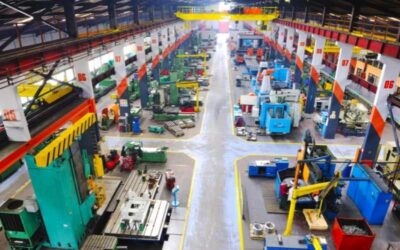Success in the manufacturing industry requires pushing your shop floor to run faster, leaner, and more efficiently. It also requires you to have sound systems in place to monitor and control all operation phases. The ability to manage unexpected scheduling and other surprises reflect management’s skills. However, management needs to be aware of trends and issues impacting the industry and develop a plan to address them beyond the day-to-day.
CURRENT MANUFACTURING INSIGHT AND TRENDS YOUR COMPANY SHOULD BE AWARE OF
A recently issued report by Enterprise Minnesota, State of Manufacturing, offers this important information. The study surveyed over 400 Minnesota manufacturers to uncover key challenges and issues. We have summarized vital information, survey insights, and significant issues impacting the industry below.
ECONOMIC OUTLOOK
The industry’s outlook for the economy has rebounded from the previous year’s survey following COVID. Those expecting a recession increased from 18% in 2021 to 43% in 2022, and those expecting economic expansion decreased from 35% in 2021 to 19% in 2022. This shows manufacturing companies are losing confidence that they will succeed in the current economy.
KEY BUSINESS METRICS
The survey asked companies whether they expected to see increases in gross revenue, profitability, and capital expenditures for 2022. For gross revenues, 39% are expecting an increase in 2022, which is a significant decrease from the 51% from 2021. For profitability, 31% are expecting an increase in 2022, which also is a decrease from the 41% in 2021. Gross revenues and profitability were not back to their pre-pandemic numbers at approximately 60% and 47%, respectively. Capital expenditures decreased in 2022 at 30% versus 44% expecting to increase their capital expenditures in 2021. This is a significant percentage drop in capital expenditures.
TOP CONCERNS FOR 2022
The main concerns from Minnesota manufacturers revolved around inflation. Inflation was the leading concern, with 55% of respondents selecting it. This was a new item added to the options for 2022, so there are no historical comparisons. Supply chain concerns are more significant for companies in southern Minnesota. The top concerns related to the workforce include:
- Attracting qualified workers (53%)
- Incoming and outgoing supply chain issues (48%)
- Retaining qualified workers (43%)
Both attracting employees and supply chain issues saw an 8% decrease from the 2021 survey. Large companies are having problems managing costs with inflation as well as finding and retaining a qualified workforce. Lower revenue manufacturers are concerned about the increasing costs of materials.
GROWTH DRIVERS
When asked about the two or three most important drivers for future growth, most manufacturing companies selected hiring new employees (44%) and finding new customers (37%). Other important drivers for future growth selected include maximizing productivity, developing company managers and leaders, creating new products, and implementing and using automation; all of these were chosen at similar rates in 2022 as 2021.
Economic Times
Almost all companies have There are heightened concerns that we’re heading toward tougher economic times. The number of manufacturers who fear an upcoming recession has more than doubled over the last year. We also see fewer manufacturers expecting their revenues and profitability
to increase this year. While attracting (and retaining) a quality workforce remains a perennial cloud hanging over manufacturing, inflation has arrived like a severe pop-up storm. Inflation is particularly a big concern among manufacturers outside the Twin Cities. Concerns about supply chain issues have died down from last year’s high.
CONTACT US
While the challenges of attracting and retaining labor continue, so does the strong demand for manufacturing services. It appears management will need to continue to be innovative in finding new ways to leverage their existing labor force while attracting new labor. The integration of technology such as automation and other software will continue to help in this area. If you have questions about the survey and its findings or need assistance with Minnesota manufacturing tax, accounting, or audit issue, we can help.



